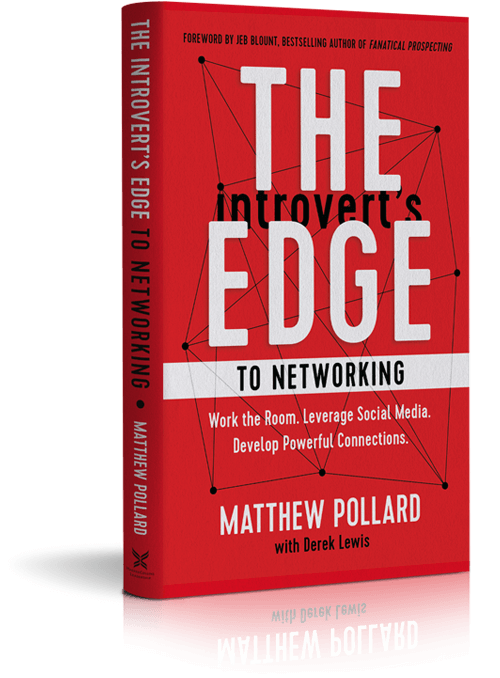Coachzing Show Transcript
Doug: Matthew Pollard, thank you so much for joining me on the Coachzing Show. I thought where we could start, would be to talk about this – the idea of a niche market and why is it important to find a niche market?
Matt: The simplest way to answer that is to talk about a story of one of my, one of my past businesses that I’ve worked with. And that really is that – I worked with an education company, who successfully acquired 2500 clients in just 3 years. And most new education facilities take years and years and years just to get a few hundred clients. Because people want to study with a place that provides them high levels of education and has huge amounts of credibility. So that level of success was phenomenal, and the reason why we achieved it is we went after a niche that nobody else was focused in.
So, as opposed to offering the message that everybody else offers, to the group of people that everybody else markets to, we had a completely different message to a whole different demographic of people. And we created a whole opportunity of no competition for ourselves. Now sure, people started to work in our niche about 12 months later, but can you imagine having no competition in any sort for about 12 months? It’s such an unbelievable opportunity for growth.
Doug: That’s amazing, yeah.
Matt: And look, I’ve done that, I’ve done that in telecommunications. I’ve done it in so many other industries for my clients. And the thing that I always say is, “What can you do that other people aren’t doing? Who can you sell to that other people aren’t selling to?” See, a common thing for most people that– If you like are, especially technicians in their own business. They want to tell you what the industry’s doing and what everybody else is doing. And that’s what they do, they replicate that. Because they’ve grown up in that industry, and as a result they just provide the same services that they’ve grown up in and that they’ve been used to providing. The problem with that is that they’re also competing against the people that taught them, other people that were taught by other people. It’s a horrible thing, and then it forces you just to compete on price.
So what’s great about a person like myself coming in is, a lot of the time I don’t understand anything about your industry. So I learn about your products and the services that you offer, and I almost don’t want to hear how you currently marketed it or who you currently sell to. What I want to do is focus on the possibilities and who it could be sold to, and the possibilities of how it could be done. And generally the ideas that I come up with are so, so different to everybody else. And what I’ve done through my courses and my training, is I’ve helped to break that down for people so that they can start to look outside their comfort zone. Which, as we know, that’s where the magic happens – and actually start to target demographics that they may have never thought of before. That could be so much more lucrative and so much more easily to grow in than anything else they’ve done before.
Doug: One of the things that – it’s funny, I hear there’s so much resistance in my experience of talking to coaches, speakers and authors. And they have this resistance, and I hear this over and over again. I’d love to get your take on it. Where people say, “But if I choose a niche, aren’t I limiting myself? Because now, I’m narrowing it down to a specific group of people instead of everybody.”
Matt: Well you’ve got 2 options. You could be everything to everybody, just like everybody else. Or really nobody to no one. Or you can be somebody to a small group of people. And I think the best explanation I can give you, and I’ve just written an article on this actually. Which is, if I sold ice and I was trying to sell ice to everybody, and my message was, “The best ice.” Well I’m gonna blend in with every other company selling ice, and ice is ice. So the price that you can charge for ice gonna be the only determinant on whether or not somebody uses me. Unless I’m a very good sales person and I’ve got a great relationship, and that’s a whole ‘nother story. You can always get people that can sell ice to Eskimos, to use the pun. However, why not start with an advantage of a group of people that really just want to buy off you? What if I decided that I wanted to be the best shredded ice in the snow cone industry?
Now all of a sudden I’ve got people telling me that they want to buy my ice for snow cones. They do research on which is the best snow cone ice, and all of a sudden they’re realising that I’m the only one in the market that really specialises in this. Now I’ve got people calling me and asking me when I can provide my products and services to them, as opposed to sending an email out to 5 people, getting prices and just picking the cheapest one. What we’re really trying to do is separate ourselves.
from the crowd. Because if you can imagine, the crowd is targeting everybody, and there are a million people searching, and there are a million people looking for clients. What I’m looking for is the 5 or 6 or a hundred or thousand people that are looking for something more unique. And those people won’t look anywhere else but me. There is no competition, there’s nobody selling to them, but me. That gives me such an advantage.
Doug: That makes a lot of sense, absolutely. I – it’s such a powerful message for listeners and an important thing for us to keep in mind. You actually also touched on another piece that people ask me, is, “How many people do I need? How big a following do I need to create a growth business?” And so maybe you can say a little bit about that as well.
Matt: What’s funny is that I do content marketing, and I’ve got a podcast like yourself. And I do all of that, because what I’m trying to do is give back. But the real answer is, if you’re truly differentiated, you don’t need to go and have such a huge network, because you’re not speaking to everybody, and therefore trying to get noticed in the crowd. You speak to a unique group of people, and you’ve just got to look for where those people hang out. But secondly, I find that I get a lot of my clients from networking events. Because I’ll be sitting in a room talking to somebody like yourself, and there’ll be 12 other coaches in the room.
And when I say, “I specialise in differentiation and niche marketing, and helping people stand out from the crowd.” They’re like, “Well hold on a second, what do you do?” “Okay, that’s not general coaching, explain to me exactly what you do? Because I’ve heard the same coaching story about how I need to systemise my business so many times. But what you’re telling me is different. Talk to me about it.” And all of a sudden, they’re pushing me for information, and they’re starting to tell me about all of their problems. I’ve got clients, so I’m in a room with 4 people – I’ve got 4 potential clients. And I’m likely to close on a substantial number of those, because they’re hounding me.
And you’d be surprised how many business coaches I have as clients, just because they want advice on how they can stand out. People say you need to go and write a book to stand out, and that’s fine, I’m doing the same thing -and I’ve got several books that are being published this year. However, that’s a lot of effort. Without starting with the absolute basics of, “What is my unique skill?”
The other thing that happens is you’ll get so many coaching clients if you’re sending the same message out as everybody else. And those clients that you get, and they want help in sales and marketing. Well what if you’ve got no experience in that? Then all of a sudden you’re a fish out of water, and they’re gonna tell your network that they should probably try a different coach. So I’m actually attracting the right clients to me, where I can give them the best outcome, the most successful opportunities. Basically, I can provide what I love doing, and that I know I can get success with. And the message I’m giving out is – if you’re in a situation where you need help with this, come to me.
Doug: Right.
Matt: I mean, the benefit that I have is that because I’ve also been a successful business owner in my own right, and I’ve coached people on businesses as well – obviously I can provide a full, full suite of things. That doesn’t mean that that’s how I market. I market based on niche marketing, differentiation and sales. People come in as clients with that, and then what I do is I then give them the whole suite of backend becasue the last thing you want to do is have a massively rapid growing sales business, yet don’t have the systems and processes to support that growth. So you need to be able to coach across all of it. However, the first message I send is telling people uniquely what differentiates me from everybody else.
Doug: And that’s very powerful, because I think of – one of the biggest challenges in coaching. To me, I think of, especially the word “life coach.” You say, “Well I’m a life coach.” People almost just tune out, because that’s just such a generic term.
Matt: Exactly right, and as you mentioned in your introduction, I’m launching a podcast. Well actually by the time this airs, it will be of launched. Called “Better Business Coach Podcast,” which is available at betterbusinesscoachpodcast.com. And in the initial sessions, I actually talk about the fact that most people will say, when they’re asked, “What is it you do?” They’ll say, “I’m coach.” Or, “I’m a life coach.” And the conversation just dies. Sometimes they may have had a bad experience with a coach, or there’s just no reason for them to continue that conversation. It’s just, if you’re a coach – I know that this is personal to you and I know that you believe, and you can help them in substantial ways.
Just like an insurance sales person can, that doesn’t mean you want to talk to them. However, if they talk about a disaster that happened and they explain to you all the problems those people had – and that their job is making sure that that doesn’t happen to other people. Then all of a sudden you’re like, “Well explain to me, what do you mean these people got hurt, and how can I prevent it happening to me?” It just turns the tables. And what I always suggest to people is that you don’t start by talking about what you do. And I’m sure as a coach when you teach sales, you say, “Talk about the benefits of the product when you’re out selling it, not the features.”
Then your coach is a feature. It’s what you do, it’s the product name – but not what you actually achieve. It’s not the outcome that you get for the customer. It’s not the liberating experience that a client will find when they first go into their business and all of a sudden their processes, their systems are working – and they can finally feel comfortable to step away from their business. So, there is so many things that a coach can do. A life coach can help people walk away from all of the stresses of their life or come to terms with them, or work out what their goals are.
There are so many things people can do, but a life coach doesn’t sound exciting at all. But if – say, “You know how most people don’t have any goals, and they really struggle with where they’re heading. And then they find 10 years goes by, and they’re still in the same spot they are now. Do you know anyone like that?” “You do? Okay. Well what I do is I help people figure out where they want to be so that they can more successfully get where they want to go.” And something simple like that, people are gonna be more likely to identify with, as opposed to, “I’m a life coach.” “Oh okay, no worries well I do this.” And that’s the end of the conversation.
Doug: Makes so much sense, and of course as you’re saying that, I’m thinking, “Well, once I get that down, I can use that in my videos, I can use that in my podcasts, I can use that on my blog.” So I get that niche down, obviously I can use any content strategy at all to share that, as opposed to, “I’m a life coach.”
Matt: Exactly right, and you’ve got to understand how important this is. I’ll give you an example. I posted an article on Entrepreneurial Magazine, going back last year. And I got a huge amount of emails and Twitter followings and Facebook followings from that article. However, most of the people that contacted me responded with, “I read your article and I noticed that you specialise in niche marketing and differentiation. I’ve always wondered whether or not I could differentiate, because I’m really struggling to get clientele to buy into my message. What exactly is it you do?” And then all of a sudden, I’m talking about what I do, however they’ve already told me that they’re interested.
Doug: Right.
Matt: Imagine if it said, “I’m a coach.” Just like every other article that they’ve read. It’s just going to blend in. They may add me because they like hearing about my articles, but they probably would never email me, because there’s nothing unique about my message. It’s just the same as they’re used to seeing from everybody else.
Doug: Yeah, I mean, as you say that too – the difference to for me is, when you talk about, “This is what I do.” All of a sudden I’ve started thinking about how you could help me. Versus when you say, “I’m a coach.” Yeah, it’s so generic now. It’s like saying, “I’m a human.” Or, “I’m male.” I’m whatever. Describe (12:08?), “I wear pants.”
Matt: It is exactly like that, however it sends a horrible other message. Which is, “Not only am I describing myself just like everybody else, but I’m about to sell you something.” Because everybody knows the word “coach” now means, I’m going to talk to you about what your problems are on the basis of trying to convert you into a client. ‘Cause everybody knows, 95% of business coaches, their main problem is they don’t get enough customers. So by introducing yourself as a coach, you may as well be saying, “I’m gonna try and sell you something now.” As opposed to saying, “What I am, is I’m a niche marketing differentiation and sales specialist.” Or, “Do you know how many people have – start up their businesses with dreams of having their own mark on the world, and to work their own hours, and to be their own boss. Yet, for some reason, they don’t get the clients behind them and they struggle with this and they struggle with that. And as a result, they kinda lost faith in themselves. Do you know anyone like that?”
“Okay, you do. Okay, well basically what I do is I create niche marketing differentiation and sales strategies to really flip that around so that they have a core demographic of people that they speak to. And when they actually get those people contact them, they have a locked down process, as opposed to saying, ‘Oh yeah I sell business coaching, do you want to buy from me?'” Which everybody knows doesn’t work, yet no one spends any time learning how to fix that situation. It’s like they learned the functional skill for 10 years, yet when it comes to selling the products and services, which is the life blood of their business, they spend no time actually learning how to phrase those 10 sentences that they need to actually translate it into a customer.
Doug: I love it. Matthew Pollard, you have shared such great content with us today. So appreciate you coming on and sharing your words of wisdom with us.
Matt: You’re more than welcome Doug, I really enjoyed this.
Doug: Thank you, same here. And I want to remind people again, then go to matthewpollard.com. And I also want to remind all of you that nothing you’ve heard here is going to make any difference in your life, unless you get out there and take some action. So go out there and make it happen. Till next time, this is Doug Forrester at the Coachzing Show.
Thanks for listening to the Coachzing Show. Need help getting your book out of your head and onto paper? Need help marketing your books or speaking engagements? We can do it for you. Go to coachzing.com to learn more. Are you a Coachzinger yet? Join the Coachzinger’s community, where the world’s best coaches, therapists, authors and speakers meet. You’ll get exclusive access to private Mastermind calls, where you can get instant marketing help from industry experts. Plus we’ll help you forge deals and partnerships with other like-minded professionals. Go to coachzing.com/community to join now
























